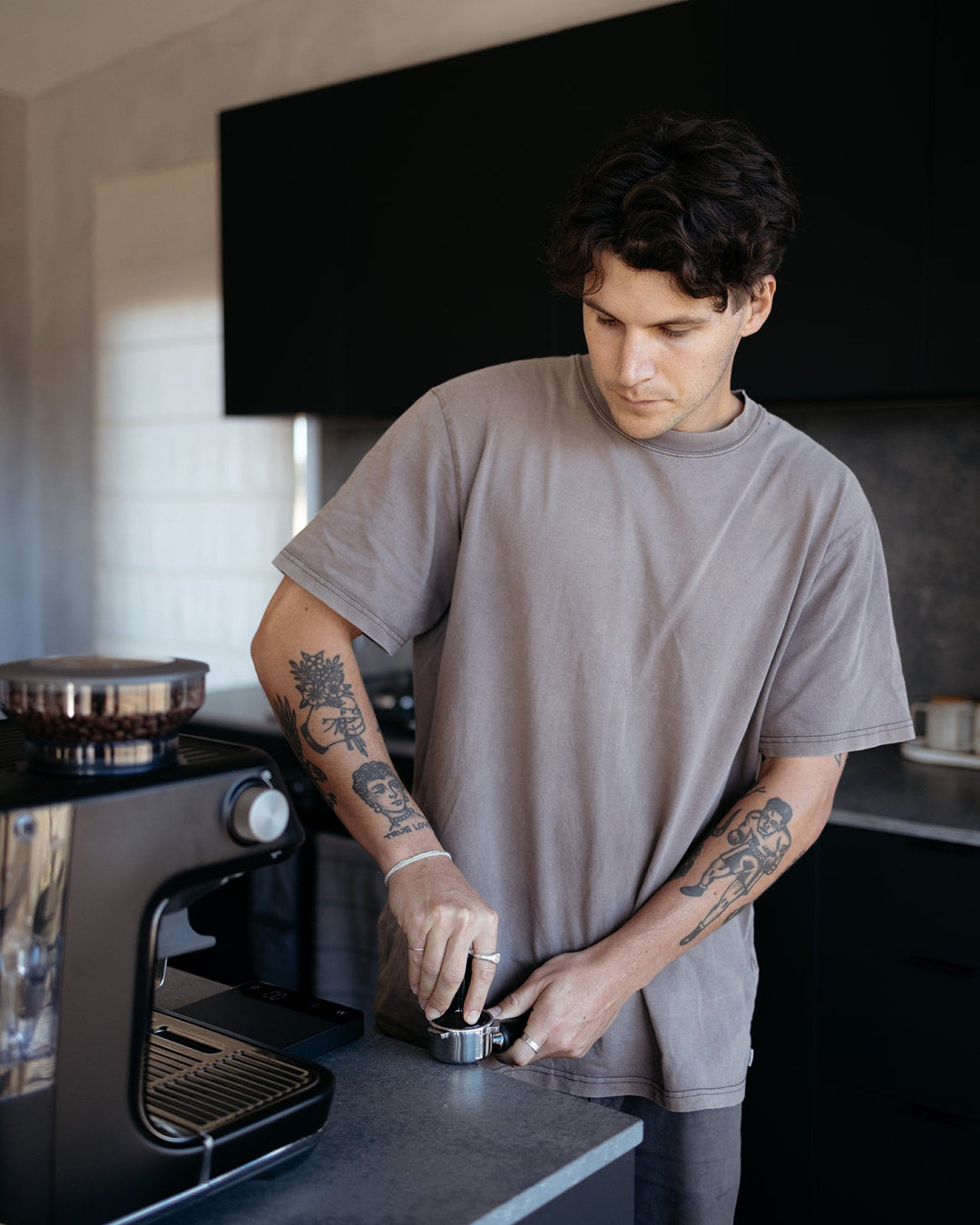Matching Food and Desserts with SOE Single Origin Espresso
Matching Food and Desserts with SOE Single Origin Espresso
Blog Article
Checking Out the Abundant Tastes of Coffee Beans: a Deep Study Espresso and Blended Coffee Beans
When you check out the rich tastes of coffee beans, you uncover an intricate world where each range brings its very own character to your cup. As you navigate through the art of coffee and the creative thinking behind mixed coffees, you'll start to value the nuances that make each sip special.
The Origins of Coffee Beans: Checking Out Terroir and Taste Profiles
When you take a sip of coffee, you're not just delighting in a beverage; you're experiencing a rich tapestry of flavors formed by the beans' beginnings. Each region creates distinct flavor accounts influenced by environment, altitude, and dirt. Beans from Ethiopia frequently break with intense, fruity notes, while those from Colombia tend to supply a balanced, nutty sweet taste.
As you check out various origins, you'll notice exactly how terroir-- the ecological factors affecting a plant-- plays an important duty - Single Origin Espresso. The very same coffee range can taste drastically various depending on where it's grown
When you think about these variables, you start to value the complexity behind your mug. Each sip narrates of the land and the farmers who supported the beans. So, next time you delight, think of the journey your coffee took before it reached your hands, and relish those elaborate flavors that show its origin.
Comprehending Coffee: The Art and Scientific Research Behind the Mixture
When you consider coffee, it's not almost the strong flavor; it's additionally concerning the methods that bring it to life. Comprehending just how various prep work methods effect preference can change your brewing experience. Allow's explore the complexities of coffee preparation and discover the special flavor accounts that make each mug special.
Espresso Prep Work Methods
Coffee preparation is both an art and a science, combining accurate techniques with a deep understanding of coffee. To begin, you'll desire to choose high-quality, fresh roasted beans and grind them carefully for perfect removal (Single Origin Espresso). The grind dimension is essential; also rugged, and your coffee will be weak, also great, and it'll be bitter
The result needs to be a rich, luscious coffee with a beautiful layer of crema on top. With method, you'll understand these strategies.
Taste Accounts Described
The globe of coffee uses a rich tapestry of taste accounts that can elevate your coffee experience. Light roasts often showcase brilliant level of acidity and vibrant flavors, while dark roasts present much deeper, bolder tones.
Comprehending these profiles helps you select the best coffee for your taste. Experimenting with different blends can reveal unusual combinations. As an example, a well-crafted mix could integrate the bright notes of an Ethiopian bean with the rich, chocolatey undertones of a Brazilian bean. Embrace the trip of discovering espresso's diverse flavors, and you'll change your coffee ritual right into an amazing adventure.
Processing Methods: How They Impact Taste and Scent
While it might appear that the beginning of coffee beans is one of the most significant consider identifying their flavor and scent, the handling methods utilized post-harvest play a similarly necessary function. You'll discover that these techniques can drastically modify the final preference profile of your cup.
As an example, the washed process gets rid of the fruit from the beans prior to fermentation, commonly leading to a cleaner, brighter taste. The all-natural procedure leaves the fruit undamaged during drying out, resulting in a sweeter, fruitier account.
Various other approaches, like honey processing, strike a balance, enabling some fruit mucilage to continue to be, offering an one-of-a-kind intricacy.
Each handling method communicates with the beans' intrinsic attributes, enhancing or silencing particular tastes and fragrances. When you drink that coffee or mixed coffee, remember that the journey from cherry to cup is influenced not simply by origin but likewise by exactly how those beans were processed.
Toasting Techniques: Unlocking the Full Prospective of Coffee Beans
Roasting methods are necessary for revealing the complete possibility of coffee beans, as they change raw, eco-friendly beans into the fragrant, delicious coffee you delight in. The choice of roasting technique-- light, medium, or dark-- substantially influences taste accounts. Light roasts maintain the beans' natural level of acidity and fruity notes, while medium roasts balance sweet taste and splendor. Dark roasts, on the various other hand, highlight strong, great smoky tastes.
You can try out roasting temperature levels and times to discover your ideal brew. A slower roast at reduced temperature levels permits for intricate flavors to develop, while a quicker roast can heighten anger. Focus on the cracks during toasting; the first split suggests a light roast, while the 2nd fracture signals a dark roast. By mastering these techniques, you'll disclose a globe of taste, elevating your coffee experience to brand-new heights. Appreciate every sip, recognizing the treatment that went into your mug!
The Magic of Blended Coffee: Developing Special Taste Experiences
Creating an unique taste experience with blended coffee can transform your early morning routine right into an exploration of preference. By combining various beans from various regions, you can disclose a symphony of tastes that raise your mug to brand-new heights. Each blend offers an unique profile, stabilizing body, acidity, and sweet taste to create something really special.
When you pick a blend, you're not just selecting a coffee; you're picking a journey across diverse landscapes and cultures. Trying out various mixes allows you to discover your personal faves, whether you take pleasure in fruity notes or rich, chocolatey undertones.

Sampling Notes: Identifying the Nuances in Your Mug
As you drink your coffee, you may see a range of tastes dancing on your palate, each disclosing the ins and outs of the beans. You may taste the bright level of acidity reminiscent of citrus or the deep, rich notes similar to dark chocolate. The sweet taste might evoke honey or caramel, balancing the general profile wonderfully.
Focus on the body of the coffee-- does it really feel airy and light, or is it complete and velvety? The finish, as well, offers ideas; a sticking around aftertaste might hint at nuttiness or floral touches.

Do not fail to remember to check out the unique characteristics of different origins, as each region gives distinctive flavors - Single Origin Espresso. Ethiopian coffees typically existing fruity notes, while Colombian beans might showcase a much more spherical sweetness. By identifying these subtleties, you'll strengthen your appreciation for every cup, raising your coffee experience to new heights

Brewing Techniques: Taking Full Advantage Of Taste Extraction for every single Bean
When you check out the different brewing approaches, you'll discover that each strategy can dramatically impact the flavor account of your coffee. From French press to pour-over, each technique removes various substances, boosting or silencing details notes. Using a French press permits oils to continue to be in the brew, producing a richer taste, while pour-over stresses clarity and brightness.
Temperature level and grind dimension also play vital roles. A coarser work functions best for cold mixtures, while a fine work is suitable for espresso. Trying out water temperature-- between 195 ° F and 205 ° F-- can reveal covert tastes, too.
Do not forget steeping time; a fast removal can bring about sour notes, while over-extraction might generate anger. By readjusting these variables, you can optimize flavor extraction and genuinely raise your coffee experience. Delight in the trip of discovering what approach best fits your taste!
Often Asked Concerns
What Is the Ideal Water Temperature Level for Developing Coffee?
The optimal water temperature SOE level for developing coffee's between 195 ° F and 205 ° F. If you utilize water that's also hot, you'll over-extract flavors; also cool, and you will not remove enough. Go for that sweet spot for the very best mixture!
Just How Does Work Size Impact Coffee Taste?
Work dimension substantially affects coffee flavor. Better grinds remove a lot more flavors and oils, leading to a bolder taste, while coarser grinds yield a lighter taste. Readjusting grind dimension aids you accomplish your preferred coffee account.
Are There Health Advantages Related To Alcohol Consumption Coffee?

What Is the Difference In Between Arabica and Robusta Beans?
Arabica beans are smoother and sweeter, commonly featuring fruity flavors, while robusta beans are stronger with a bitter taste and greater high levels of caffeine material. You'll see these differences in fragrance and developing experience.
How Can I Store Coffee Beans for Quality?
To save coffee beans for freshness, maintain them in an airtight container, away from warm, light, and moisture. You'll maintain their flavor much longer if you just grind what you need right before developing.
Discovering the Abundant Tastes of Coffee Beans: a Deep Dive Into Coffee and Blended Coffee Beans.
When you discover the rich flavors of coffee beans, you reveal a complicated world where each range brings its very own personality to your cup.When you take a sip of coffee, you're not just appreciating a beverage; you're experiencing a rich tapestry of tastes formed by the beans' origins.Roasting strategies are crucial for disclosing the full potential of coffee beans, as they transform raw, green beans into the aromatic, savory coffee you take pleasure in.As you sip your coffee, you may discover a range of tastes dancing on your taste, each revealing the ins and outs of the beans.
Report this page